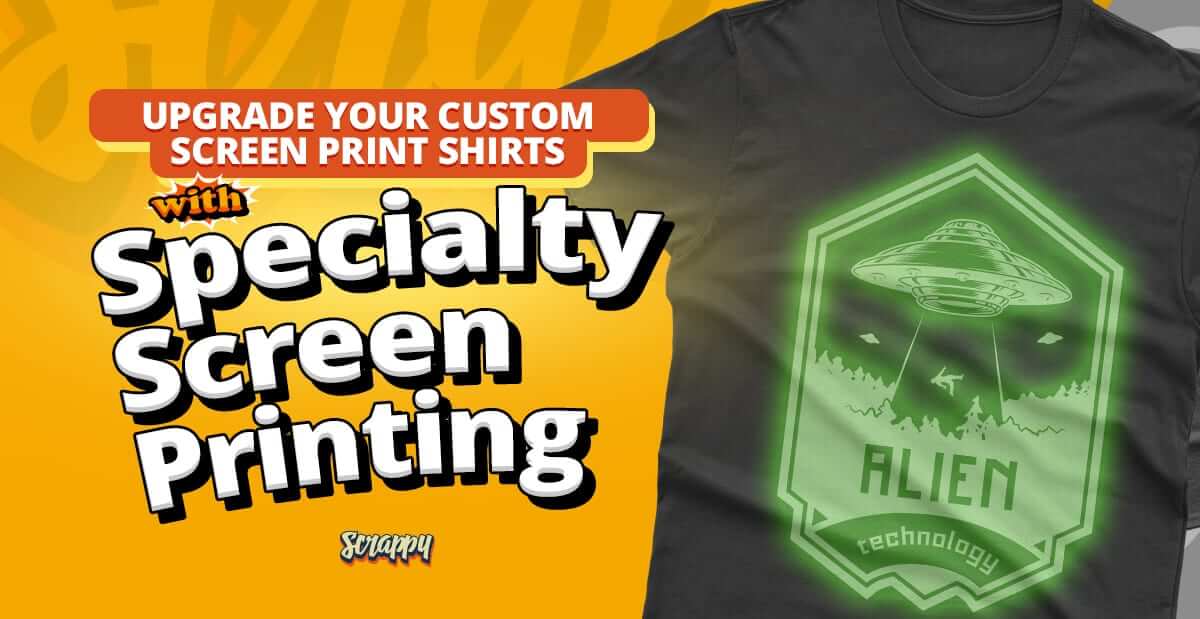Complete Screen Printing Kit for Artists and Creators
Complete Screen Printing Kit for Artists and Creators
Blog Article
Display Printing Uncovered: Every Little Thing You Need to Learn About Tee and Garment Printing Methods
If you have actually ever before questioned exactly how those vivid layouts wind up on your favorite t-shirts, you're in the right place. Display printing is a fascinating method that integrates art with technique, offering unlimited possibilities for creativity. Understanding the basics, from devices to ink options, can considerably affect your outcomes. Prepared to check out the necessary aspects that make display printing an art form? Allow's discover the information that can raise your projects.
The Basics of Screen Printing: Exactly How It Works
When you plunge right into screen printing, you'll uncover it's both an art and a scientific research. At its core, display printing entails developing a stencil, or display, that allows ink to pass via just in particular locations.
Placement the screen over the textile, then utilize a squeegee to press ink through the display onto the garment. Each action is crucial, and mastering them will raise your display printing abilities, transforming straightforward garments into special, meaningful pieces.
Kinds Of Screen Printing Methods
When you understand the fundamentals of display printing, it's time to check out the different techniques that can raise your styles. One preferred approach is typical display printing, where ink is pressed via a stenciled display.
One more option is plastisol printing, recognized for its longevity and dazzling colors, making it a favorite for lots of brands. Experiment with halftone printing to create slope effects and detailed styles.
Necessary Equipment for Display Printing
To achieve magnificent outcomes in screen printing, having the appropriate equipment is essential. You'll need a tough screen printing framework, which holds the mesh that transfers your layout onto the garment. Next, buy high-quality mops; these are necessary for applying ink equally across the screen. You'll also call for a good direct exposure device to produce your displays, along with a washout booth for cleansing them after use. A reliable warm resource, like a conveyor dryer or warm press, is crucial for curing your prints to guarantee longevity. Do not neglect a proper work area, outfitted with tables and storage for your products. Protective equipment, such as masks and handwear covers, will certainly maintain you safe from chemicals and inks. With the right tools, you'll be well on your method to creating professional-quality prints.
Selecting the Right Inks and Materials
When choosing inks and materials for screen printing, you need to take into consideration the type of ink that works best for your project. Think of textile compatibility to guarantee your designs look last and terrific lengthy. Check out environmentally friendly ink options to make your printing procedure much more sustainable.
Sorts Of Display Inks
Choosing the best display ink is crucial for attaining vivid, durable prints that satisfy your task's requirements. There are a number of sorts of screen inks to analyze. Plastisol ink is prominent for its versatility and ease of use, offering exceptional shade opacity on dark textiles. Water-based ink, on the other hand, supplies a softer feel and is eco-friendly, making it excellent for those aiming to minimize their environmental influence. Release inks remove dye from the fabric, resulting in a soft, vintage look but call for details handling. Finally, specialized inks, such as metal or glow-in-the-dark, can add distinct effects to your styles. Review your task needs and choose the ink that aligns finest with your desired result.

Material Compatibility Factors To Consider
Comprehending textile compatibility is vital for attaining top quality display prints, especially since different products react distinctively to different inks. Always evaluate your inks on sample material to ensure they adhere appropriately and maintain color integrity. In addition, maintain in mind that material weight and texture can affect the last end result, so choosing the ideal ink and material combo is vital for your task's success.
Eco-Friendly Ink Options
Eco-friendly inks are becoming a preferred choice for screen printers who desire to reduce their environmental impact while preserving top quality. When choosing inks, consider water-based inks, which are much less unsafe and simpler to cleanse up contrasted to traditional solvents.
Furthermore, try More Help to find inks made from sustainable resources, such as soy or vegetable-based choices. By picking the ideal inks and materials, you'll not just produce spectacular layouts however likewise add to a much more sustainable printing procedure. Make the button, and your prints will certainly reflect your commitment to the environment!
Preparing Your Layout for Screen Printing

File Layout Requirements
To assure your layout looks sharp and vibrant on fabric, you'll require to pay close attention to submit layout needs for screen printing. Make certain your design has a clear background to avoid undesirable white sides on your prints. Keep color settings in mind; CMYK is standard for display printing, so convert your RGB creates appropriately.
Color Separation Techniques
Shade splitting up is an essential step in preparing your style for display printing, and grasping it can substantially enhance your print quality. You'll need to damage your design right into private shades, as each color needs a different display during printing. This precision not only guarantees accurate color representation however also streamlines the printing process.
Resolution and Size
Accomplishing the ideal cause display printing starts with ensuring your layout has the appropriate resolution and size. Preferably, your artwork must go to the very least 300 DPI (dots per inch) for sharp, clear prints. Your final item could look pixelated and less than professional. if you use reduced resolution.
When it comes to dimension, take into consideration the dimensions of your print location. Layout your art work to match the last print size, ideally producing it in the real dimensions you'll be printing. By doing this, you'll prevent any type of unforeseen scaling concerns.
Constantly examine your design in both vector and raster formats. Vector graphics can be scaled without losing high quality, making them suitable for display printing. Preparing appropriately will assure your design looks remarkable on every garment!
Step-by-Step Display Printing Refine
Display printing is a dynamic process that permits you to create vivid designs on various surfaces. To get begun, you'll require a screen, solution, and your chosen ink.
After washing out the unexposed emulsion, your screen prepares. Set it up on your printing surface area and align your garment beneath it. Put ink onto the screen and make use of a squeegee to push the ink via the pattern onto the fabric. Raise the display very carefully and let the print completely dry. Ultimately, treat the ink using heat to ensure durability. That's it! You've successfully screen printed your design.
Tips for Effective Display Printing Projects
While you're diving right into your display printing jobs, bear in mind that preparation is essential to success. Start by gathering all your products-- inks, screens, mops, and garments. A clean work area assists prevent unwanted mistakes, so clean before you begin.
Following, validate your artwork is high-resolution and correctly sized for your garment. Check your screen for correct exposure and clean it thoroughly to stay clear of smudges. When mixing your inks, follow the maker's standards to accomplish the right uniformity.
During printing, use even stress with your squeegee for regular results. Don't rush; take your time to validate each print fulfills your criteria. After printing, let your garments dry entirely before dealing with or packaging read this post here them.
Lastly, always keep a sample of your help future reference. In this manner, you can assess your progress and boost your strategies in time. Delighted printing!

Frequently Asked Inquiries
For how long Does It Take to Establish a Screen Printing Task?
Establishing up a screen printing task commonly takes about thirty minutes to an hour. You'll prepare the displays, mix inks, and adjust the press. The moment differs based on complexity and experience, so remain arranged!
Can I Publish on Various Textile Keys In Utilizing the Exact Same Strategy?
Yes, you can print on various textile types making use of the same technique, but you'll need to change your inks and settings. Some materials take in ink differently, so experimenting assurances the most effective results for each product.
What Are Common Blunders to Stay Clear Of in Screen Printing?
When display printing, avoid usual errors continue reading this like using the incorrect ink, overlooking proper direct exposure times, or avoiding pre-press checks. Always examine your setup and preserve clean displays to guarantee top quality outcomes each time.
Exactly How Can I Effectively Clean and Preserve My Display Printing Devices?
To correctly tidy and keep your display printing devices, you ought to on a regular basis wash screens with ideal solvents, check mops for wear, and ensure all tools are stored dry and dust-free. Consistency avoids costly fixings and boosts efficiency.
Is Screen Printing Ecologically Pleasant Compared to Other Approaches?
Display printing can be a lot more eco-friendly than other techniques, particularly if you use water-based inks and eco-conscious materials. By choosing sustainable products and techniques, you lower waste and minimize your influence on the world.
Screen Printing Uncovered: Everything You Need to Know About T-Shirt and Garment Printing Techniques
At its core, display printing involves developing a pattern, or display, that permits ink to pass with just in certain areas. Placement the display over the textile, then use a squeegee to push ink through the display onto the garment. One preferred method is standard screen printing, where ink is pressed with a stenciled display.When selecting inks and products for display printing, you need to take into account the type of ink that functions finest for your job.
Report this page